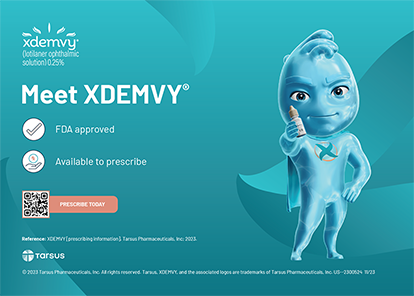When patients come to the ASC, they are far more nervous and worried than they are during a routine office visit. In short, they are terrified; they know the surgeon is going to make an incision in their eye. Patients have much more confidence when the eye care team appears to be helping them every single minute that they are in the practice. To that end, my staff and I have implemented several systems to maximize efficiency and improve patients’ comfort at our ASC, which will only grow in importance as the number of patients increases and reimbursements decrease.
ONE NURSE, ONE PATIENT
For 20 years, we had a preoperative staff, an OR staff, and a postoperative staff. We recently switched to a one-nurse, one-patient system. A single nurse takes care of a particular patient from his or her arrival to his or her departure.
The nurse goes to the waiting room, meets the patient and his or her family, and brings the patient back to the station. The nurse then prepares the patient for surgery. When it is time for the operation, the nurse will push the stretcher into the OR and stay by the patient’s side until the start of the surgery. When the operation is over, the same nurse helps push the patient out of the room and oversees his or her recovery. When the patient is stable, the nurse brings him or her back out to the waiting room to his or her family.
Treating one patient for the entire visit allows the nurse to be completely aware of the patient’s physical and emotional needs. Also, by focusing on one patient, the nurse has fewer distractions, which promotes excellent care. As a result, the patient more easily bonds with his or her nurse, thereby reducing nervousness that may require medication or delay the surgery.
ONE-PAGE FORM
My staff and I redesigned our office consultation note so that it doubles as our ASC history and physical form. It contains comments about a patient’s medical or physical limitations and the need for any special techniques or devices. The form is brought to the ASC shortly after the patient is examined, so the nurse can anticipate the patient’s needs and plan as necessary. Reviewing the office form just prior to the case refreshes my memory of a patient’s examination before I begin. We have found this system more useful than writing or dictating a separate history and physical, which may leave out valuable details and emphasize things that are less important.
PRODUCTS
We are now using the Smart Automated Inventory Management system (Hoya Surgical Optics, Inc., Chino Hills, CA) to manage our IOL inventory. This system tracks each box of IOLs with radio frequency identification technology. We keep the boxes in a cabinet with a transmitter that records inventory levels. When an IOL is used or damaged, the company immediately ships a replacement. We do not have to contact customer service to place an order. Nor do we have to manually count packages.
The iSert preloaded IOL injection system (Hoya Surgical Optics, Inc.) has made cataract and refractive surgery simpler and less stressful at our ASC. Every nurse I know worries about holding up the operation by loading the IOL too slowly or by damaging it. If the surgeon loads a lens, it prolongs the time of the operation. The iSert is preloaded with the IOL so that no hands have to touch it before it is delivered into the eye. All I have to do is lubricate the tip, slide it forward, and inject the IOL into the eye. The system saves time in the OR and eliminates a lot of tension for the staff.
I rely on the Malyugin Ring (MicroSurgical Technology, Redmond, WA) when I perform cataract surgery on an eye with a small pupil. These cases can be very difficult and time consuming. In exchange for 2 minutes of time—one for placing the ring and another for taking it out—I can guarantee an adequately dilated pupil for the duration of the cataract procedure.
CONCLUSION
Focusing on efficiency in the ASC creates a more pleasant experience for patients as well as for nurses and surgeons. It also saves us time and money as health care reform changes medical practices. We carefully selected these products and systems to reduce hassle and distractions, thus making the ASC a more pleasant environment for patients and staff.
Paul S. Koch, MD, is a founder and themedical director of Koch Eye Associates in Warwick, Rhode Island. He is a consultant to Hoya Surgical Optics, Inc. Dr. Koch may be reached at (401) 738-4800; paulkoch@kocheye.com.


